#industrial hemp
Photo

#weed facts#industrial hemp#budder#yield#weedstagram kw%#marijuana facts#effects of weed#cannabis seeds for sale#pot
46 notes
·
View notes
Text
Agroforestry with oaks and hemp for more biodiversity, reforestation and soil improvement
Agroforestry, forestry and agriculture with oaks and hemp can improve soils, biodiversity and water balance, that's why Greening Deserts launched the program Agrarhanf.com, Bodenrettung.com und Eichenwald.org. Oaks harbor and enhance biodiversity more than any other trees!

The contributions and projects are intended to support forestry and agricultural managers with useful ideas, impulses and innovative solutions. We recommend planting tree rows more densely in the beginning and then singling out individual trees as the years go by. In the beginning, larger trees can be planted and slightly smaller ones in between, which are then useful as replacements and for the region. This technique is very proven in Eastern Europe and the agroforestry is therefore also a kind of tree nursery. Agroforestry systems are less susceptible to forest fires.
Mitigation of climate change impacts through healthier and stronger ecosystems, higher soil and air moisture are essential for survival, especially with the increasing loss of cropland worldwide. Flowering trees and wildflowers on trees can attract more pollinators and important insects (beneficial insects) which, like birds, also reduce pests. Agroforestry is therefore one of the best ways to adapt to climate change and extreme weather events such as droughts.
Alternative tree species with nutritious berries and nuts as well as hardy palms can be found on Greening Deserts project pages and naturally on the Leipzig Palms Project. In the meantime, there are also plenty of suitable industrial hemp varieties, just read the official regulations for the cultivation of hemp in Germany. We recommend undemanding, tall-growing and narrow hemp varieties for the production of hemp fiber. Bushier sorts for more leaves and hemp seeds, such as for food and feed. Commercial hemp can significantly reduce nitrogen and methane emissions, this has been confirmed many times by international researchers and studies. Some hemp varieties require very little water and can improve long-term biodiversity, nutrient supply and soil moisture. Similar to lupines, hemp can also be used as a green manure, for example if there are times when yields or growth are not so good in individual years, the plants can be added to the soil after harvesting together with compost and / or leaves. For hemp cultivation, no pesticides and very little fertilizer are needed.
There are multiple options of tree planting, especially drought-tolerant oaks! Planting of pre-germinated seeds, e.g. germinated acorns, transplanting of young plants and cuttings around old trees in open areas in the forest or at the forest edge. Purchasing perennial oaks and seedlings from nurseries especially for urban regions and urban areas where larger trees are needed. If there is extreme abundance of oaks and saplings in some years, they can be taken from old trees. Otherwise it would be a pity if they die in the forest due to lack of light or are destroyed by mowing on meadows in the park. As a result, many millions of oaks are probably lost every year. The projects, campaigns and initiatives should also change or improve this, for example by showing how to do it, giving useful tips and having many people follow the movement. Not only people from the concerned areas but also people from all areas and branches, also from the educational area, for example young people from schools and students from universities. After all, collecting and planting oak trees is not only a nice balance to intellectual work, it is good for health and properly implemented also a kind of sport. In addition, one is more outside in nature and can learn a lot.
One can harvest acorns very effectively in places with the raking and a special vacuum cleaner, sustainably and only a part at a time, especially at half mast and blast mast. As some clever farmers, foresters and forest owners have already done. Every year there are acorns in abundance, according to estimates several thousand tons, sustainable harvesting would not harm ecosystems, on the contrary... too much acorns are not good for soils! You can harvest acorns very effectively in places with raking and a special vacuum cleaner, sustainably and only a part at a time, especially with half mast and blast mast. As some smart farmers, foresters and forest owners have already done.
With healthy and natural feeds like hemp and acorns you can replace many of these feeds in the short term and in the long term! Especially oaks with large fruits are suitable for agroforestry, where rows of trees are planted in fields. Useful crops can then be grown between the rows. Acorns are good not only for animals, but also for humans, as a healthy addition to the diet or medicine. Acorn meal is very healthy and acorns with residual bitter compounds are good for the stomach and intestines.
The potential for more sustainable livestock production is enormous. In Spain, animals are partially fed on oak trees. Iberian acorn-fed pigs eat only acorns, grasses and herbs from pastures. Acorn fattening and pig fattening could also in Germany not only reduce feed costs, costly and environmentally harmful procurement of feed. It would protect together with increased hemp cultivation soils and forests worldwide, since soils are destroyed less by deforestation and harmful crops. Of course, meat consumption or production should also be reduced globally - especially overproduction and senseless waste.
There is simply too much food being wasted, thrown away or going bad; improved distribution and preservation through better or faster drying could help. At the same time, less environmentally damaging crops such as corn, canola and soy should be grown along the way. Particularly intensive agriculture damages soils; oily plant parts can seal soils or repel water. This is fatal when prolonged droughts dry out the soil severely and rain then does not seep in well in many places or even runs off completely on the surface.
In order to bring forward topics such as species conservation, biodiversity, education, climate and environmental protection, as well as to promote a more sustainable forestry and agriculture, we want to increasingly involve schools and universities in our actions as well as projects in the years until 2030. The Oak Park and Oak Forest project Eichenwald.org was established together with the Schools Forest Initiative in 2019 and 2020.
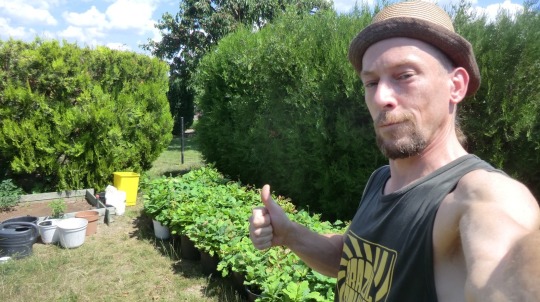
We want to plant about 50,000 trees for and region, together with schools and school classes. The floodplain forest could be extended by a few meters at the edges! If one the relationship of the enormous meadows and open spaces which lie around the Auwald and forests in Saxonia one asks oneself why no or so few forest extensions were made until today. There is enough space around the alluvial forest and forests in Saxony. One does not need therefore necessarily a new forest to plant. Already on a meter band more forest at the edge of the forest thousands of new trees could be planted! If the work and projects are finally financially and actively supported, the actions and projects can be implemented more quickly, even by the end of 2023. Otherwise, due to lack of money and time, all the work and other important projects of the founder can unfortunately not hire helpers, get equipment or stuff is needed and will plant the oaks themselves over time and then plant out somewhere else. Then, unfortunately, there will be no Leipzig forest expansion with many important tree species and oak varieties. Because without any payment and support it simply does not work, especially under the current circumstances and plight of the founder, which lives since spring at subsistence level. The Oak park and forest actions since a few weeks takes almost all working time and free time, if there comes no support thousands of sprouted acorns will be planted in buckets, pots and bags. This saves a lot of time and ways.
Almost 40,000 oaks have already been planted over the years in Germany and regions of Europe. These are now well adapted to the drought, because they were planted out early and thus could root deeply. In Leipzig and region about 12,000 oaks were planted out! The founder of the Urban Greening Camp and Vertical Farming Startup has collected acorns from many different trees, these can then be easily put into the ground when they have germinated. The germination rate is very high and the mortality rate very low because oaks root very quickly and deeply - so they survive drought years quite well as we have unfortunately had more often now.
Oaks support more biodiversity than any other German or native trees. Individual specimens with hundreds of species have been discovered and recently even a world record with well over a thousand species! As some Greening Deserts articles and projects have already well shown or extensively explained. Projects and programs like the Trillion Trees Initiative have been exploring these relationships for years, especially the relationship between biodiversity, healthy ecosystems and trees that are essential for the survival of many other species. If we save, protect and propagate key tree species on which many other species depend, we also protect many thousands of species in the plant and animal kingdoms, as well as soils, waters, microorganisms, insects and fungi! Key species and endangered tree species should be primarily introduced into ecosystems and forests. Various EU organizations and official bodies were informed the years several times - also directly by email and contacted with many letters, unfortunately ignored by many or answered only superficially. The Urban Greening and Vertical Farming Startup not only wants more creative urban greening with tree containers or raised beds and planting walls. It also wants to establish more mini-forests in Leipzig and the region, also to create hotspots for biodiversity. Municipalities, farmers and forest owners from all over Germany are invited to provide parts of their area(s) for this project.
It is a win-win situation for everyone as such a mini-forest promotes a good climate and insect diversity in the region, in addition various tree species can also be planted more densely to use them in the future for further reforestation or forestation in the region, this is not only logistically sensible, but also saves money, time and resources. The small forests can serve as a diverse nursery or growing forest, so to speak. Greening Deserts founders have been creating the concept for several years and to date it is mature, because it is to be implemented together with the emerging movement of agroforestry and agrovoltaics throughout Germany and then Europe. The main project can be reached under GreeningCamp or GreeningDeserts.com, in addition the Trillion Trees Initiative and various forest projects will support this movement in the future.
Greening Deserts founders and researchers explore with various projects not only drylands and arid ecosystems, but also wetlands such as floodplains, riparian forests, wet forests, bogs or swamps, lake and river landscapes. Long-term studies of marsh trees and wetland plants have been carried out, including photographic studies and in such a number of wetlands of Europe. Swamps and bog forests have been documented over many years. Results will be published with the projects and project developments like Eichenwald.org, MoorForest and SwampForest.org in the future. The international platform will then be accessible at WetForest.org. For years we have been recommending the reforestation and expansion of peatlands, which can store more carbon CO2 than any other ecosystem, and to further reduce emissions, especially methane emissions, trees should be planted. Swamp or bog trees such as swamp oak or bald cypress grow relatively fast and together with organisms such as bacteria and fungi can stabilize the water bodies or wet soils, in some cases even bind methane as well as convert it. Wetlands without trees warm up faster than moist forests which cast shade and are much cooler than open areas. This is also a reason why wetlands release more methane, forest ecosystems suffer from droughts or extreme drought, store less carbon and can even release it - especially through forest fires and dried out or destroyed soils. Mixed forests and tree species that favor soil moisture also have a much lower risk of wildfire. Trees can cool the area by many degrees, even in urban areas, almost all cities should know this by now.
Air pollution, insecticides and pesticides are not only a threat to bees, they also endanger many other species, especially near agricultural and livestock farms. Many of the trees and forests typically found in forestry are monocultures and conifers such as Douglas fir, spruce, pine, larch and fir - unfortunately, these do not provide much nectar. Nearly 80 percent of conifers were felled because of damage. At just under 70 percent, the share of damaged wood in total logging in 2019 was more than three times higher than in 2010. As already described in the article on the Leipzig Oak Park of Diversity project, strong tree species such as oaks are also affected. Whether due to pests, powdery mildew or drought stress, the plants suffer greatly from the drought. Like many deciduous trees, oaks belong to the deep-rooted species, which fetch water from lower soil layers. What they do not need themselves, they release closer to the surface. This makes oaks good soil regulators, for example through pronounced symbioses with microorganisms and fungi. Oaks and other robust trees are suffering from climate change, as are many people and animals. Tree damage and forest degradation result not only from fires, drought and heat waves, but also from fungal infestations, pests, snow breakage, storms, floods and environmental toxins - as well as air and water pollution.
According to climate research, long-term studies and weather experts, extreme drought is becoming normal in Europe in the summer. In spring, many places around the world also lack the water needed for healthy plant growth. Soils and forests can hold less water because the important reservoirs are not only dried out but damaged, i.e. the storage capacity is reduced and in some cases reduced for years. When middle and deeper soil layers harden, humus layers turn to dust or are destroyed, even a lot of rain will not help for the time being. It then takes years of moderate rain and some plant growth until these soil layers are loosened and watered again. Trees, hedges and other plants that can form complex, strong and deep roots need several years to loosen medium and deep soil layers again. This is why ground cover, soil conservation measures and deep rooting plants like thistles are so important. Greening Deserts has therefore started the project SoilRescue.eu and TrillionTrees.eu.
The destruction of soils by extensive agriculture, surface mining and drainage accelerates land degradation. A major problem is the hardening and water repellency of soils due to greasy or oily surfaces. Fats, oils, and waxes from plant parts fall to the ground with the particulate matter. Rain then cannot penetrate the top layer of soil and runs off superficially. Factors such as soil type, plant species, temperature and the degree of desiccation determine how water repellent the soil becomes. Often, soils cannot be loosened by plowing until after harvest. However, if the drought lasts for a long time, there is a risk of soil erosion by wind - especially in the fall there are more winds and storms. We can all only hope that there is not another winter drought, as this would damage the soils for years to come. Already in 2018, more soil conservation measures should have been implemented, such as covering with ground covers, emergency irrigation with extra canals, ponds and rainwater storage above ground or underground. There are some other effective and innovative methods such as agrophotovoltaics, hemp cultivation, and desert bamboo.
Due to tree mortality during drought years, Germany is missing billions of trees; these cannot be replanted quickly by private and state forestry companies. This is compounded by more difficult conditions due to extreme weather and future droughts. Many of the new forest plantings since 2018 have died, often far more than half of all young trees. Movements like Fridays for Future and school groups should be involved in a variety of reforestation and planting activities - such as collecting seeds, planting trees and wildflowers. Especially for children and young people, it makes sense to combine healthy exercise, nature and fresh air with meaningful actions for people and the environment. During the actions you can not only learn a lot but also get a better understanding of nature and the environment. Especially in this autumn there is a chance to collect millions of acorns for new plantations and to plant perennial trees. This can be done basically all winter long if it gets as mild as 2019, there were even weeks in January and February with spring temperatures.
Reforestation and other tree planting activities should be concentrated more in the fall and more in the spring with the current climate conditions. This will give the young trees more time to root deeper and have a higher chance of surviving in a new drought year. Of course, extra watering can be done, and often a simple plastic bottle with drip irrigation is all that is needed. This simple irrigation technique is often seen in Africa and India. So you don't need to buy new products or techniques for watering trees, there is already enough plastic waste! SchoolsForest and 'Schools Forest Up' is a project idea of Greening Deserts and together with other planting actions, in a community, could plant the areas with forest damage faster than you think.
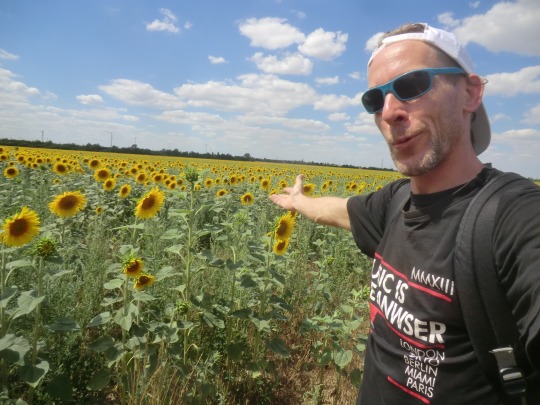
Contributions and quotes of Greening Deserts founder Oliver Caplikas:
Agroforestry is one of the best ways for forestry and agriculture to adapt to climate change and extreme weather events such as droughts. It allows for more sustainable agriculture and ecological forestry, as an agroforestry using only trees as a type of nursery is also possible. #ClimateAdaptation
Climate protection, nature conservation and environmental protection is species protection, so it is also human protection.
Europe should finally wake up and promote more hemp cultivation to support biodiversity, CO2 storage, ecosystem restoration and soil improvement - especially in drought regions and areas with deforested or degraded soils. More sustainable agriculture is possible if hemp production increases in European countries. Healthy agriculture with hemp also requires no pesticides and very little fertilizer or some green manure and mineral fertilizers such as rock meal every year.
Greening Deserts and Trillion Trees Initiative has been informing EU and parties for years about the problems of burning fossil fuels like wood and coal. Don't burn trees and forests, use hemp and rice straw for building, animal feed.... #agriculturalhemp.com #hempcultivation #industrialhemp.
Greening Deserts has launched new sustainable organic farming projects. One of them is called #Agrarhanf.de, a German project for industrial hemp that can improve biodiversity, animal and soil health - and reduce carbon and methane emissions! #organic farming #hemp fodder #hemp pellets.
Hemp can help improve air, climate, soil and water quality. Hemp plants support biodiversity and protect forests. Global hemp cultivation can reduce climate change impacts such as deforestation, desertification and global warming.
Hemp paper like hemp toilet paper can reduce deforestation and global warming worldwide! Prevent forest dieback with #hemppaper, improve biodiversity and soils with hemp farming. #agricultural hemp #soil saver #soil conservation #climate saver #utility hemp.
Feeding agricultural hemp to cows can lower their stress levels and improve their overall health. Hemp could replace corn, soy and other polluting crops - saving forests, soils and rainforests! Like sea grass, agricultural hemp can reduce methane emissions from cows!
Greening Deserts projects like agricultural hemp help farmers, growers and foresters with biodiversity, soil and climate protection by providing useful hints and advice, such as soil improvement, effective plant breeding, sustainable nutrition, cheap and environmentally friendly feed sourcing.
For several years, Greening Deserts projects have been recommending politics and business to finally promote / encourage soil improvement with agricultural / industrial hemp on a large scale. See article Hemp cultivation in surface mining. Not much has happened to date. #agricultural hemp #hemp paper #hemp seed
Many companies in Germany are dedicated to paper production, hemp paper production is largely absent. The machines or production is set on waste paper or pulp. German machinery and paper manufacturers do not produce hemp paper on a large scale. #hemppaper
We don't have much time left to stop global warming and the loss of biodiversity, of which cities and urban areas are a very large part. The simple formula applies: Urban Greening = Urban Cooling. That is why the projects like Greening Camp and the private organization GlobalGreening.org, among others, were founded. Global greening is the only large-scale and nature-based solution to noticeably cool the planet and particularly affected regions. With this, it may be possible to get back below 1.5 degrees by 2050.
We hope that Europe and Germany will finally use more hemp for biodiversity and large-scale soil improvement and drought protection. Drought or drought tolerant plants and trees such as sweet chestnuts, oaks,.. can improve agroforestry and ecological forestry in the long term and sustainably.
*Acorn fattening, also commonly called eckerich in German-speaking areas, was a widespread agricultural practice in Central Europe until the 19th century. Domestic pigs were driven into the woods to gorge themselves on acorns, beechnuts and chestnuts. The word "fattening" originally referred to the tree fruits used as cattle feed. Later it was restricted to acorns and beechnuts used as pig feed. Today, the word mast is generally used to refer to the "fattening" of animals. In addition, the seed production of oaks and beeches was called, for example, eckerich, ecker, acker or acker. From this, the acker was derived from an agricultural point of view. - Wikipedia
#Artenschutz#Artenvielfalt#Agroforstwirtschaft#agroforestry#acorns#biodiversity#conservation#climate adaptation#climate and environment#drought#german#Germany#hemp#industrial hemp#oaks#forests#reforestation#ecological#chestnuts#bees#soils#oak park#species rescue#species protection#urban greening#nursery#vertical farming#tree species
66 notes
·
View notes
Text
This special Christmas message from Time 4 Hemp is for you and all your 420 friends. Please share it.

#hemp#cannabis#marijuana#war-on-drugs#medical marijuana#industrial hemp#medical cannabis#christmas#christmas decorations#cannabis culture#thc#ganja#cannabiscommunity#time-4-hemp#marijuana research#indica#marijuana legalization#marihuana#hemp.#hempproducts#hemp nutrition
4 notes
·
View notes
Text
anyway im so sad that hemp has such a bad reputation "because It'S DrUgS" >:| it literally has so many uses that have nothing to do with weed
7 notes
·
View notes
Text
What’s So Great About Hemp Plastic?
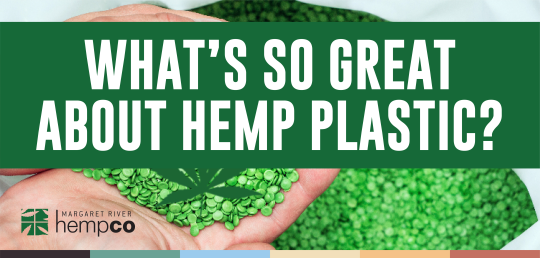
The use of plastic is one of the most damaging habits we have as humans… Just take a look at the great pacific garbage patch for example.
But it’s not like it all goes there. That’s just where the current takes a lot of it. Unfortunately, our plastic addiction has contaminated all but 13% of all fish in the great barrier reef in our very own home in Australia. Isn’t it just tragic?
As if this isn’t bad enough, commercial plastics used in most packaging all require fossil fuels to be manufactured. A lot of energy goes into making plastics, and the byproducts after making them also take a toll on the environment. So not only are we destroying our oceans, but also contributing to the draining of resources and polluting the rest of the environment around us.
The nail in the coffin?
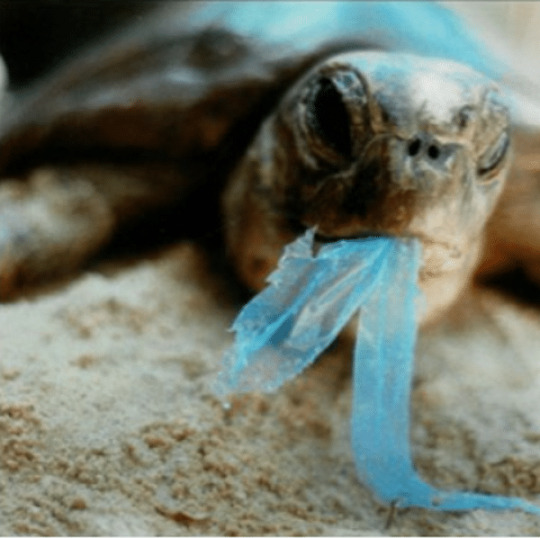

Most plastics will take at least 500 years to break down. Even then, the microplastics will continue to pollute marine life all over the ocean…
As it is, it’s said the average person consumes around a whole credit card worth of microplastics in food and drink every single week – that’s about 20 grams!
But rest assured, as small batches of composites called ‘bioplastics’ are starting to pop up all over the world, which can offer temporary solutions to our plastic habits as we start to change the way we use them.
Enter hemp – One of the newest kids on the bio-plastic block.
Recently, companies have started to develop hemp plastics and that do not contain any of the toxic chemicals that can cause harm to both humans as well as the rest of the ecosystem we exist in.
Basically, hemp plastic offers a non-toxic, biodegradable, earth-friendly solution to one of humanity’s greatest problems. To top it off, it’s much stiffer and 2x as strong as what we like to call ‘plastics from the past’.
Hemp… what can’t it do?
The Making of Hemp Bioplastics
Hemp is very easy to grow and grows extremely quickly. It’s one of the fastest-growing crops on earth, with an average turnaround of around 3 months. As a fast-growing weed, it outgrows competing weeds before they have the chance to break through the canopy, which virtually eliminates the need for herbicides. Chemical pesticides are also rarely required, as hemp is a very pest-resistant crop.
One of the coolest things about hemp is something we talk about often… Hemp consumes a LOT of Co2 through a process called carbon sequestration, which can then be locked into the plastics that are made.
Yep, it requires so much Co2 to grow that it cleans our atmosphere. A similar process called phytoremediation also cleans the soil. You can read more about these in our blog about 7 ways that hemp is helping us build a sustainable future.
Once grown, it is harvested and processed, the stems are usually separated and further refined into hemp biomass. Stems are used because they contain anywhere between 70-80% cellulose. From the biomass, the cellulose can then be processed further and used as the basic building block for hemp bioplastics.
Simple – kind of…
Are Hemp Bioplastics Currently In Use?
You may ask when this concept of hemp plastic was made popular in the public eye. It might take you by surprise to hear that it was not a recent development!
In 1941, a pioneer in the automotive industry by the name of Henry Ford went public with a car prototype called the ‘Model-T’. There are unconfirmed stories of this running on hemp fuel, but what is widely known is that the body of the car was made from hemp-based plastic.
Unfortunately, it was made sure that this was never mass-produced. A couple of years later, hemp went from one of the most predominant crops in society, to being outlawed completely. Could you imagine what the world would look like if Henry Ford got this out to the masses? (Read more about Ford’s Model T, and his ideas for Biofuels here.)
However, the period of prohibition in the United States is over. We can grow hemp here in Australia now. And even Thailand just legalised cannabis and started educating their youth on it. But what does all this mean? It means there’s more progress towards this reality every single day.
Finally, over the last 10 years, there have been new developments in the field of hemp bioplastics
Notable companies implementing hemp plastics
Entwined™ Hemp 3d Printing Filament:
3D printing technology is stirring quietly in the background, quietly making leaps and bounds towards viable, commercial printing options. “But what about eco-friendly options?” you may ask. Well, now there is one – and it’s made from hemp! Entwined™ offers a 3d printing filament that’s based on hemp. It still uses a poly-blend, but we think it’s a massive step forward in this field.
Sana Packaging
Made from a blend of 30% hemp and 70% other plants, Sana packaging offers hemp packaging solutions to relevant medical and recreational marijuana industries. They also make plastics using 100% reclaimed ocean plastic. Packaging is a huge issue in the marijuana industry in the U.S.A, which Sana hopes to help address by utilising the very plant that is being sold inside the packaging. We hope that one day, this technology will be adopted by the Australian market in one way or another!
Hemp Plastic Company
The Hemp Plastic Company is a Canadian R&D company that aims to develop commercially viable hemp-based bioplastics that can be used in place of traditional plastics. Currently, they have a range of options available to cater to the needs of customers around the world.
You can check out their whole range here! You’ll be glad to know that they stock a 100% hemp bioplastic, that you could buy today!
Conclusion
So, hemp plastics are starting to look like quite the breakthrough, aren’t they?
The main reason we wanted to write this was to bring some awareness to the fact that our abuse of single-use plastics is causing exorbitant amounts of damage to our planet. But before leaving on a note of doom-and-gloom, we also want people to know there are solutions!
It’s not just hemp bioplastics offering solutions. Another great example of high-cellulose crops is sugarcane and corn. Basically, anything high in cellulose can be used to make cellulose-based bioplastic. On top of that, you have other bases like bio-resins. It’s all pretty nitpicky stuff, but if it’s what you want to learn more about, we encourage you to do so!
There are also people like Boylan Slat, who are making breakthroughs in cleaning up the plastics currently residing in our oceans! The Ocean Cleanup Project recently completed their first successful prototype, which they will eventually scale, and use to clean up their goal of 50% of the Great Pacific Garbage Patch in 5 years.
So, it’s not all doom and gloom. And there are lots of solutions – Hemp is one of them.
Do you think hemp bioplastics will take off? What do you think the commercial biggest use of hemp bioplastics will be in the future? We’d love to hear from you!
Learn more about whether Hemp can help solve plastic pollution here.
#plastic#Hemp#industrial hemp#ecofriendly#hempcommunity#margaret river#australien#hempseedoil#natural products#hemp protein#healthcare#Hemp Plastic#hemp products#hemp news#made in australia#recylcing#recycling#waste#Plastic Free July#HempCo
7 notes
·
View notes
Link
#prefab steel buildings for marijuana grow house#grow house#hemp#industrial hemp#farming#cbd#crop cultivation
6 notes
·
View notes
Text
youtube
We've used cannabis for tens of thousands of years. Not just to get high but also to make textiles, paper, medicine and much more. We then outlawed it for decades – only to realize the stuff is pretty good at helping fight climate change. So get ready for the cannabis comeback.
Reporter: Serdar Vardar
Camera: Serdar Vardar
Video Editor: David Jacobi
Supervising Editor: Joanna Gottschalk , Malte Rohwer-Kahlmann & Kiyo Dörrer
We're destroying our environment at an alarming rate. But it doesn't need to be this way. Our new channel Planet A explores the shift towards an eco-friendly world — and challenges our ideas about what dealing with climate change means. We look at the big and the small: What we can do and how the system needs to change. Every Friday we'll take a truly global look at how to get us out of this mess.
#PlanetA #Cannabis #IndustrialHemp
Read more:
Hemp and sustainable agriculture:
https://link.springer.com/chapter/10....
Challenges of revitalizing hemp:
https://www.sciencedirect.com/science...
Hemp as a sustainable raw material: https://www.sciencedirect.com/science...
A potted history of Cannabis:
https://www.nature.com/articles/525s10a
Chapters:
00:00 Intro
00:52 The forgotten crop
04:08 Buildings made from hemp
07:03 Better paper?
08:00 Hemp and the textile industry
10:12 What holds us back
12:12 What lies ahead
13:35 Outro
Special thanks for background interviews to:
Ethan Russo
Daniel Piomelli
Tony DeVeyra
Michael Bieder
Don Langlois
Robert C. Pearce
John Fike
Benjamin Cassou
Francesco Mirizzi
#dw planet a#solarpunk#cannabis#hemp#industrial hemp#rope#paper#clothes#medicine#sustainable agriculture#hempcrete#architecture#hempcrete blocks#hempcrete bricks#Youtube
3 notes
·
View notes
Text
The founder and owner of True Hemp Clothing International was diagnosed with Pancreatic Cancer. Read the full story on his GoFundMe.
#cancer#thcint#hemp#industrial hemp#fuck cancer#true hemp clothing#true hemp clothing international#pancreatic cancer
0 notes
Photo

#whatismarijuana#gethighwithme#Weed#kush weed#cannabisculture#health benefits of marijuana#industrial hemp#maryjane#cannabis growing
0 notes
Text
Natural hemp seeds – Indus Hemp
Made from 100% pure, sustainably grown and environmentally friendly hemp seeds, these versatile flakes can be used in cuisine as a source of protein or as a substitute for coconut oil, adding instant texture and flavor. They are also perfect for plant-based milk and yogurt recipes – simply grind the flakes and mix them into your favorite homemade dairy-free milk.

This is the highest quality hemp seeds that you can find in the market. It is full of essential fatty acids and minerals, which means it's more nutritious than most other products.
Good to use as a natural food and cosmetic supplement. The food contains all essential amino acids, as well as having a high content of omega-3 and omega-6 fatty acids, providing a complete protein source. The seeds can be eaten raw or used in baking or cooking in any way you like

Antioxidant-rich, high in protein and omega 3s, beans of exceptional quality. This is the perfect snack for your family – delicious as is or a great addition to salads, soups and smoothies.
Call Us : 9703996345
Address: Vayu 206, My Home, Madhapur, Hyderabad, Telangana - 500 081
Website: https://www.indushemp.in/
#natural hemp seeds#organic hemp seeds#hemp#hemp seed oil & hemp seeds#natural hemp flour#hemp seed oil & hemp seeds manufacturer#industrial hemp#hemp seed oil cake & hemp seeds#hemp seed oil cake & hemp seeds manufacturer#organic hemp seeds (#organic toasted hemp seeds#hemp industry#global hemp association#hemp hearts or shelled hemp seed#shelled hemp seed or hemp hearts#raw cold pressed hemp seed oil#2l organic hemp seed oil#organic hemp products#hemp products and benefits#hemp products for weight management#hemp products for skin#hemp products for hair#hemp seed oil for dogs#hemp protein powder#best quality hemp seed oils hemp nutritional values
1 note
·
View note
Photo
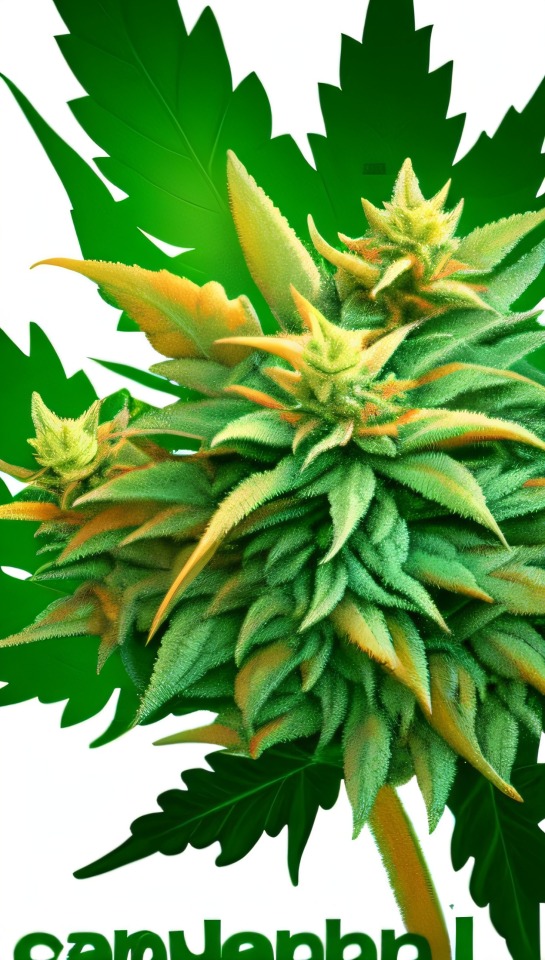
#industrial hemp#best weed#thc#blunt#weedkw%#weed drug#marijuana legalization#420 weed#benefits of marijuana
16 notes
·
View notes
Text
NC Medical Marijuana Bill Held Up As Industrial Hemp Laws Sunset
NC Medical Marijuana Bill Held Up As Industrial Hemp Laws Sunset
There’s a growing industry here in North Carolina, and with it come countless rules, gray areas, and legal confusion—and no, we’re not talking about NFTs.
The hemp industry has been blooming in the state for years, but North Carolina is one of 12 states that doesn’t have a medical marijuana program. With the end of the legislative session on Thursday, and with it the sunset of the state’s 2017…

View On WordPress
#hemp farmers#Industrial hemp#Legal Marijuana#Medical Marijuana Bill#north carolina hemp#north carolina marijuana
0 notes
Text
I've started a NEW CANNABIS HEMP BLOG and will post to it each M-F. I only have 10 post on it right now. There is a FREE MARIJUANA MUSIC MP3 DOWNLOAD at the bottom of every post. Please share this.
#hemp#cannabis#marijuana#war-on-drugs#prohibition#medical marijuana#industrial hemp#medical cannabis#cannabis cup#cannabis culture#sativa#marijuana legalization#global marijuana march#marijuana reform#ganja#hempfest#hemp seeds#hemp protein powder#hempproducts#hemp nutrition#industrial hemp market
2 notes
·
View notes
Text
Hemp Seed Oil For Pets | Health Benefits And Uses
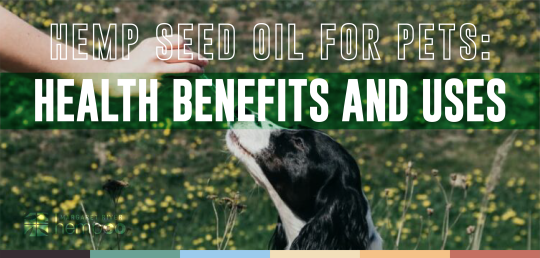
First things first: Anything with an endocannabinoid system can benefit from hemp.
Hemp seed oil for pets is a fascinating topic, especially considering its incalculable benefits. But even though it has such an impressive array of advantages, pet owners are often oblivious to this amazing natural herb… and fair enough, it’s been illegal and misportrayed for so long!
But this is no longer the case, so we want to help spread the word of how everything on this planet can benefit from hemp – not just humans.
…So don’t worry if you haven’t heard much about it yet. In this article, we’re going to bring you up to speed on all the benefits of hemp seed oil for your pets – dogs and cats alike!

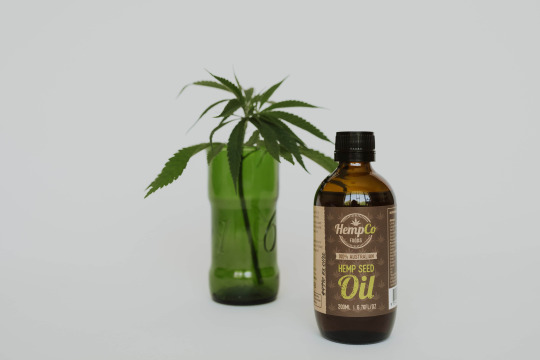
Hemp Oil Vs. Hemp Seed Oil For Pets… What’s The Difference?
Hemp oil (also known as CBD oil) is a medicinal product that’s manufactured from the flower of the female Cannabis sativa plant. It’s quite high in cannabidiol (CBD) and other cannabinoids and can contain THC, the compound that is reported by Wikipedia to be the principal psychoactive in cannabis.
This is one of the main ‘medicinal cannabis oils’ that we’ve been hearing so much about recently! As it seems, it’s becoming widely used for pain relief for humans and pets across the world. Hemp Oil is essentially a concentrated extract of the medicinal compounds of the cannabis plant, and therefore contains high amounts of cannabinoids.
Hemp seed oil, on the other hand, is the oil extracted by cold-press from the seeds of the same cannabis plant. Legally speaking, hemp seed and hemp seed oil in Australia should have less than 0.3% THC to be sold. This oil contains only slight traces of THC and CBD.
Therefore, you can legally use hemp seed oil without a prescription for yourself or your pet animals in Australia. The composition of the hemp seed oil is perfect for pets. In fact, it’s one of the only natural food in the world that has Essential Fatty Acids (EFA) like Omega 6 and Omega 3 in the optimum ratio of 3:1.
But that’s not all. With a newfound interest in this often-neglected plant, researchers seem to be finding more about the diversity of its benefits every day. Let’s take a look at a few ways that pets can benefit!
Benefits Of Hemp Seed Oil For Pets
Hemp seed oil can truly be a life-saver for your pet. But that doesn’t mean you need to use it only in times of distress and sickness. In fact, hemp seed oil could – and should – be used in your pets routine diet. Here are a few reasons why!
Improved Skin And Coat
Hemp seed oil can improve skin health in both dogs and cats, leaving them with a fluffy, irresistibly cuddly coat. As mentioned above, hemp seed oil has the perfect composition of Essential Fatty Acids (EFA) like Omega 6 and Omega 3 in the ratio of 1:3.
Omega fatty acids are one of the most important factors for skin and coat health in animals.
Hemp Out Agency mentions in their article that the unbalanced composition of Omega 6 and Omega 3 in your pet’s diet can cause major upsets in its health. With extra Omega 6, your pet’s body would further reduce its Omega 3 levels.
Similarly, with an excess of Omega 3, the body would cut back on Omega 6. This can lead to serious instabilities in your pet’s body. As a result, other unbalanced sources of Omega fatty acids like fish oil can not be relied upon.
The fact that it is a perfectly balanced source of Omega-3 and omega-6 fatty acids further magnifies the importance of incorporating hemp seed oil in your pet’s diet.
Treating Skin Allergies
Any oil that is so perfectly balanced with Essential Fatty Acids would certainly work well for skin allergies and diseases. A 2005 research noted that Atopic Dermatitis (Eczema) patients experienced reduced allergic symptoms with the dietary use of hemp seed oil.
…And that’s just getting started! There are many other notable benefits of hemp for pets, which you can read more about here
Safe Use And Dosages Of Hemp Seed Oil For Pets
We often hear questions like, “how much hemp seed oil should I give my dog?”
Hemp seed oil is comparable to sunflower oil – and is perfectly safe for your pets. It does not contain any psychoactive compounds like THC and includes minimal amounts of CBD as well.
So, you can even incorporate hemp seed into your cat or dog’s meal without fear. The general rule of safe dosage is 1ml – 5ml depending on your furry friend’s weight.
On the other hand, CBD oil (or hemp oil) is used as medicine and only a vet can prescribe a proper dosage for it. Unfortunately, not much research has been conducted on safe levels of concentrated CBD oil for pets.
Will Hemp Seed Oil Get My Pet High?
No. Hemp seed oil will not get your pet high. The psychoactive chemical in Cannabis that gives the sensation of being “high” is THC (Tetrahydrocannabinol). With that said, there’s virtually no THC in hemp seed oil. Therefore, our furry friends would have to get into a lot of hemps to get high – just like humans!
All in all, hemp seed oil for pets is not just safe – but highly beneficial as well.
Check out our Hemp Doggie Treats by clicking here.
#Hemp#hempcommunity#ecofriendly#industrial hemp#australien#hempseedoil#margaret river#healthcare#hemp products#cbd#hemp news#hemp oil#essential oils#oil and gas#midnight oil#hemp protein#natural products#made in australia#fish oil#skin care products#pet lovers#pet videos#dog blog#pet blog#pet oil#oil for pets#hemp seed oil#HempCo
3 notes
·
View notes